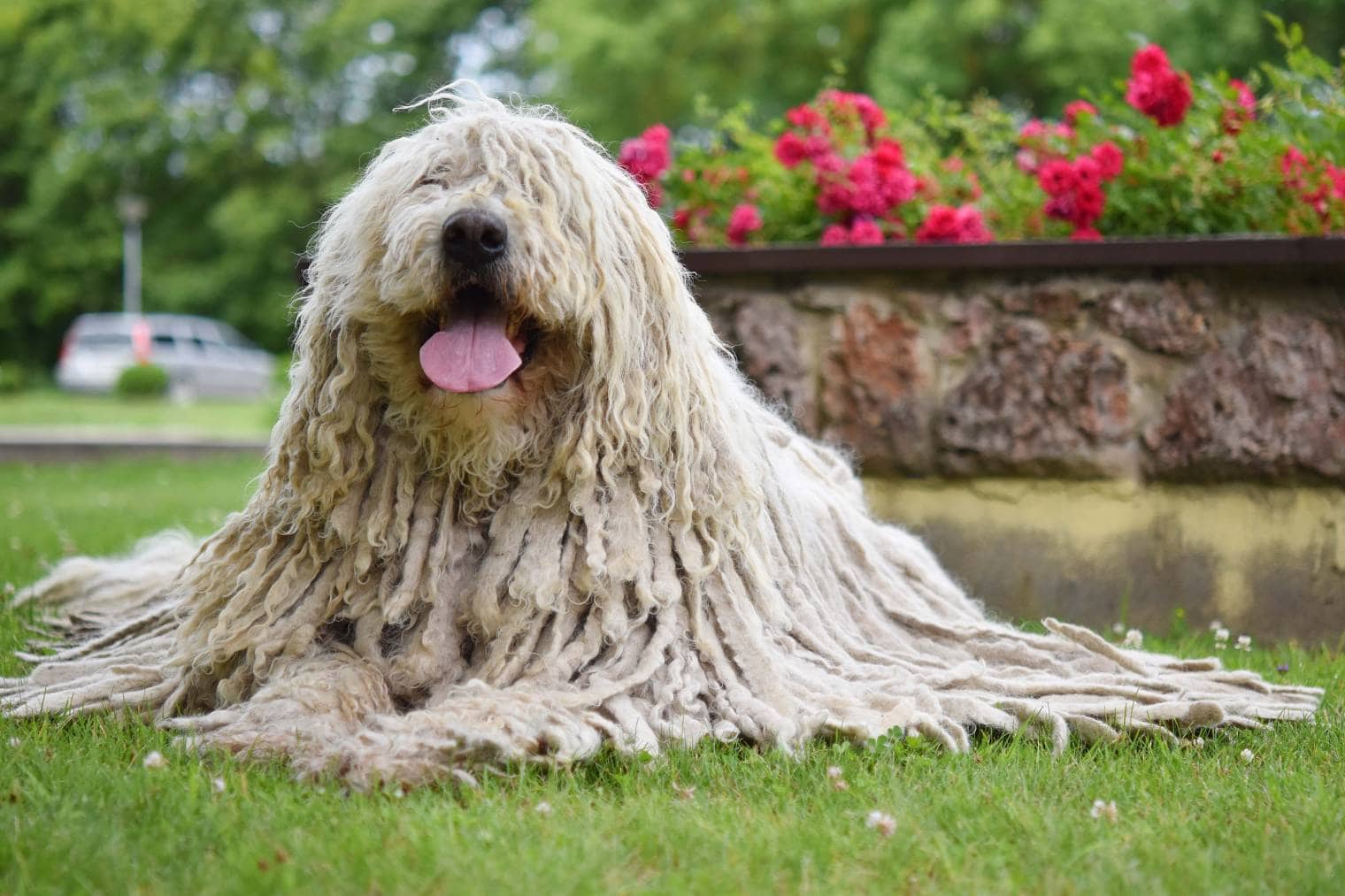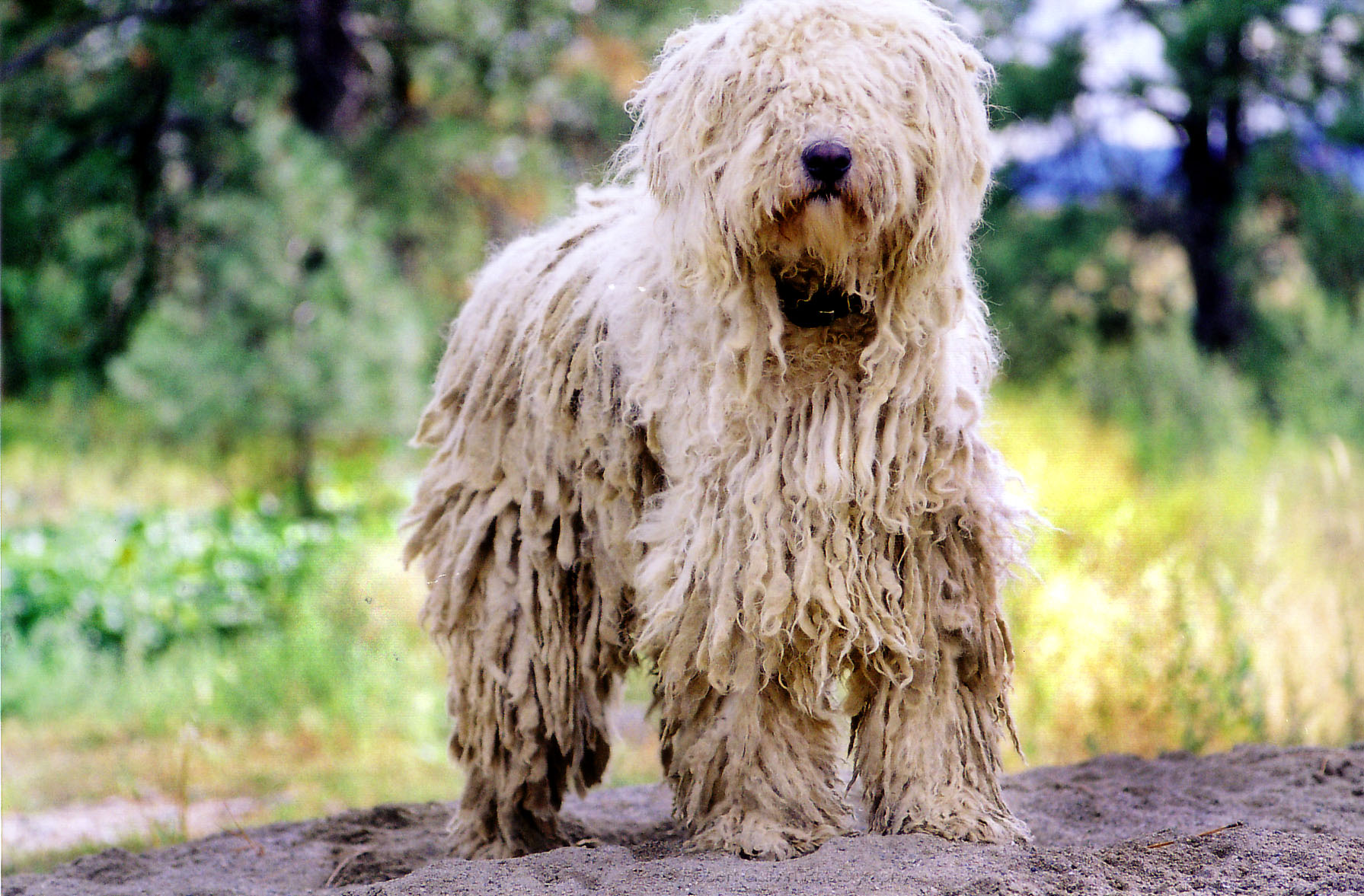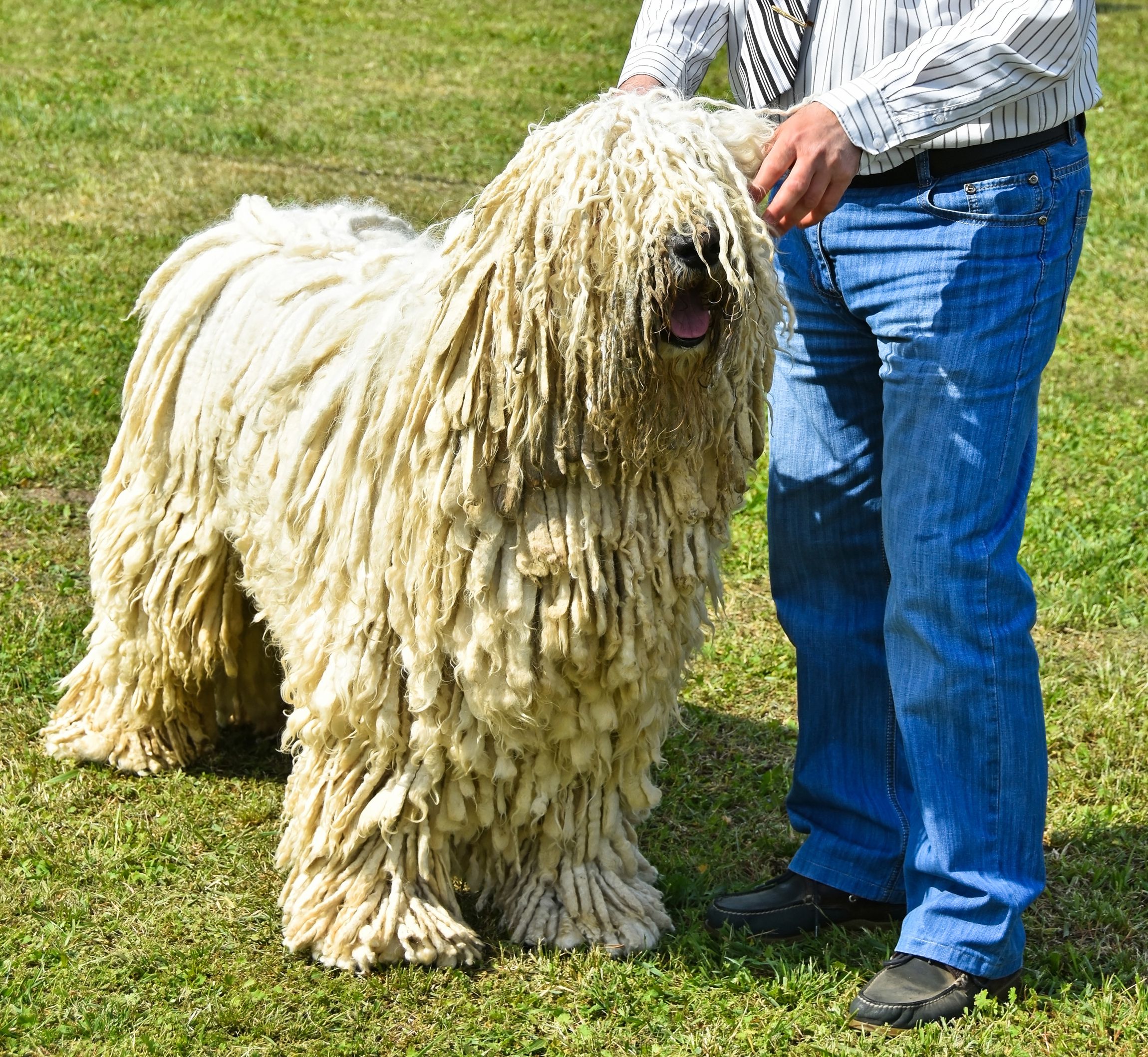
The Komondor is one of the most distinctive dog breeds in the world, instantly recognizable by its long, corded coat that resembles dreadlocks. Originating in Hungary, the Komondor has ancient roots and was traditionally used to guard livestock against predators like wolves and bears. Its ancestors are believed to have arrived with nomadic Magyars over a thousand years ago, likely descended from large, Asian livestock-guarding breeds.
The breed’s signature coat allowed it to blend seamlessly with sheep, offering both camouflage and protection against the elements and bites. Recognized by the American Kennel Club in 1937, the Komondor remains a symbol of Hungarian pastoral life and cultural heritage.
While never a mainstream favorite due to its size and grooming needs, the Komondor has a loyal following among livestock owners, enthusiasts of rare breeds, and dog show participants. Its appearance alone draws attention, and its fearless guarding instinct continues to make it an excellent working dog in rural environments.
The breed has gained some pop culture attention for its "mop dog" look, but it remains relatively rare, especially outside Hungary.
The Komondor is a large, muscular dog with a unique coat that forms natural cords as it matures—offering both visual drama and functional protection.
Coat: Dense, woolly, and corded—starts soft and fluffy as a puppy and gradually cords into long tassels by adulthood.
Color:
• Always white, a traditional trait that allowed it to blend with flocks of sheep.
Size:
• Height: Males 27.5 inches and up (70+ cm); Females 25.5 inches and up (65+ cm)
• Weight: 80–130 lbs (36–59 kg), with males typically larger
Head & Expression: Large and broad, with a serious, alert expression and deep-set, dark brown eyes.
Ears: Medium-sized, hanging close to the head.
Tail: Carried low, with a slight upward curve at the end.
Body: Strong, heavy-boned, and covered entirely in thick cords.
Beneath its mop-like exterior, the Komondor is a highly intelligent, fiercely protective, and independent breed.
Protective and Brave: Bred for guarding, the Komondor is instinctively watchful and will defend its home or flock with conviction.
Independent Thinker: Not prone to blind obedience—makes decisions based on instinct and assessment of threats.
Loyal to Family: Bonds deeply with its owners and often shows strong affection at home, though reserved in public.
Wary of Strangers: Suspicious of unfamiliar people or animals unless properly socialized early in life.
Calm Indoors, Alert Outdoors: While often relaxed and gentle inside the home, it becomes highly vigilant in open or unfamiliar spaces.

Best suited for experienced dog owners with secure homes, the Komondor offers loyalty, protection, and a stunning appearance.
Top-Tier Guardian: One of the best natural watchdogs—doesn’t need to be taught to protect.
Unique Appearance: Its dreadlocked coat draws attention and admiration wherever it goes.
Independent Yet Devoted: Doesn’t demand attention constantly but is deeply loyal to its family.
Hardworking and Capable: Ideal for rural homes or those needing an instinctual livestock protector.
This breed is not for the casual owner—it requires both physical and emotional commitment, especially regarding coat care and social development.
Training:
• Start early and use confident, consistent methods.
• Needs a firm but respectful leader—responds poorly to harsh correction.
• Strong guarding instincts mean early socialization is essential.
Exercise:
• Moderate needs—a couple of good walks or secure yard time each day is enough.
• Mental stimulation and purpose (like guarding or puzzle games) are crucial.
Grooming:
• High-maintenance! Coat naturally forms cords around 8–12 months of age.
• Cords must be separated regularly to prevent matting and mildew.
• Bathing is infrequent but drying can take hours—some owners opt for professional grooming.
• Coat repels dirt and doesn't shed much, but it’s not ideal for allergy sufferers.
Nutrition:
• Balanced large-breed diet with controlled calorie intake to avoid weight gain or joint strain.
Companionship:
• Best in homes where someone is often present or the dog has a role.
• Can be quite solitary, but dislikes being locked away from its people.

Komondors are generally healthy and robust, with a lifespan of 10–12 years. Some health concerns to be aware of:
• Hip and elbow dysplasia
• Gastric torsion (bloat)
• Entropion (inward-turning eyelid)
• Skin and ear issues due to trapped moisture in the coat
Regular check-ups and reputable breeders who test for genetic issues are essential.
The Komondor is often compared to the Puli (a smaller Hungarian herding dog with cords) and the Bergamasco. It is larger and more imposing than the Puli, and more intense in guarding instincts than the Bergamasco. Unlike the Old English Sheepdog or Great Pyrenees, the Komondor has a more primitive temperament and requires a more knowledgeable handler.
If you're seeking a striking, highly protective, and devoted guardian with a unique coat, the Komondor may be the perfect match—provided you're prepared for the grooming demands and strong temperament.
Not recommended for first-time dog owners or homes that cannot provide secure outdoor space and proper training.
United Pet Club is ready to help you discover and care for this ancient guardian breed. From grooming tips and training resources to breeder recommendations, we’re here to support your Komondor journey every step of the way.